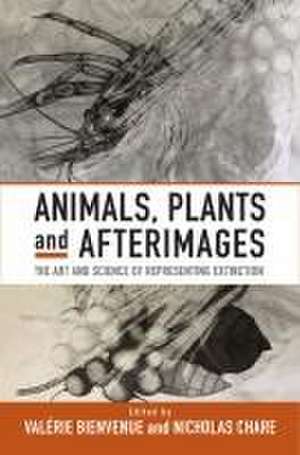Animals, Plants and Afterimages
Editat de Valérie Bienvenue, Nicholas Chareen Limba Engleză Paperback – iul 2024
| Toate formatele și edițiile | Preț | Express |
|---|---|---|
| Paperback (1) | 125.06 lei 3-5 săpt. | +27.34 lei 6-10 zile |
| BERGHAHN BOOKS – iul 2024 | 125.06 lei 3-5 săpt. | +27.34 lei 6-10 zile |
| Hardback (1) | 1001.26 lei 6-8 săpt. | |
| BERGHAHN BOOKS – 11 mar 2022 | 1001.26 lei 6-8 săpt. |
Preț: 125.06 lei
Nou
Puncte Express: 188
Preț estimativ în valută:
23.93€ • 25.99$ • 20.10£
23.93€ • 25.99$ • 20.10£
Carte disponibilă
Livrare economică 02-16 aprilie
Livrare express 18-22 martie pentru 37.33 lei
Preluare comenzi: 021 569.72.76
Specificații
ISBN-13: 9781805393320
ISBN-10: 1805393324
Pagini: 462
Dimensiuni: 152 x 229 x 25 mm
Greutate: 0.66 kg
Editura: BERGHAHN BOOKS
ISBN-10: 1805393324
Pagini: 462
Dimensiuni: 152 x 229 x 25 mm
Greutate: 0.66 kg
Editura: BERGHAHN BOOKS
Notă biografică
Nicholas Chare is Professor of Art History in the Department of History of Art and Film Studies at the Université de Montréal. He is the author of After Francis Bacon (2012). In 2017, with Sébastien Lévesque and Silvestra Mariniello, he founded the baccalaureate (BACCAP) in visual cultures at the Université de Montréal.
Descriere
Descriere de la o altă ediție sau format:
From quaggas to thylacine to dinosaurs, Animals, Plants and Afterimages brings together leading scholars in the humanities and life sciences to explore how extinct species are represented in media, art, literature and elsewhere, crossing academic boundaries to explore how portrayals of disappeared species embody cultural assumptions.
From quaggas to thylacine to dinosaurs, Animals, Plants and Afterimages brings together leading scholars in the humanities and life sciences to explore how extinct species are represented in media, art, literature and elsewhere, crossing academic boundaries to explore how portrayals of disappeared species embody cultural assumptions.
